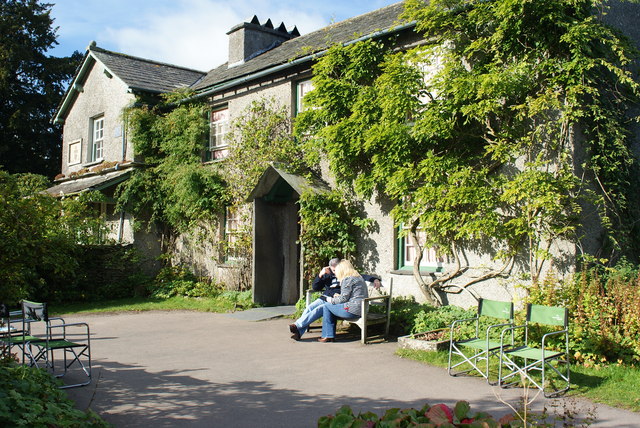A rare Fungus drawn by children’s author Beatrix Potter in 1896 has been rediscovered on a Scottish estate.
The species spotted only a handful of times in Britain since it was documented almost 120 years ago has been found thriving in Aberdeenshire.
Tremella simplex, a non native parasitic fungus found in Canada, was discovered on New Year’s Day on Mar Lodge, the Aberdeenshire estate owned by the National Trust for Scotland.

Beatrix Potter’s home where she captured dozens of fungi in water colours and drawings
Potter is best known for literary characters such as Peter Rabbit and Jemima Puddle Duck, but she was also a keen mycologist – the studying of fungi.
She captured dozens of fungi in water colours and drawings, including T simplex, which she is believed to have drawn in 1896 while on holiday in Dunkeld, Perthshire.
Potter was unaware at the time but her illustrations were the first documented evidence of the fungus in Britain.
There have been only a few handful of official reports since, most recently in ENgland in 1964 and Scotland in 1938.
“It’s a very exciting find,” said Professor Roy Watling, the former head of mycology at the Royal Botanic Garden in Edinburgh.
“The last sighting in Scotland was decades ago.
Potter was a careful observer of fungi and lichens and produced dozens of fungal paintings, which are on display in the Armitt museum in Ambleside, Cumbria.
Her illustrations of T simplex captured details about fungi that had eluded other scientists at the time, she painted the fruiting bodies and other parts at all ages in the fungus cycle.
“Beatrix Potter was an excellent illustrator of fungi and she could not have known the importance of her discovery all those years ago,” Watling added.
T simplex feeds off another fungus most commonly found on Abies fir trees.
It is thought that fungal spores were introduced to Britain when vast swathes of the country were planted with conifers imported from around the globe in the 18th and 19th century.
Liz Holden, a mycologist who found the fungus at Mar Lodge, said she was delighted at her discovery.
She said: “We know relatively little about Britain’s fungi species so these finds help to extend our knowledge of their distribution. It’s terrific.”
More than 12,500 species of fungi have been documented in Britain, of which about 10,000 are found in Scotland.
Potter donated her other mycological drawings and scientific drawings to the Armitt Museum and Library in Ambleside where mycologists still refer to them to identify fungi.
There is also a collection of her fungus paintings at the Perth Museum and Art Gallery in Perth, Scotland donated by Charles McIntosh
In 1967 the mycologist W.P.K. Findlay included many of Potter’s beautifully accurate fungus drawings in his Wayside & Woodland Fungi, thereby fulfilling her desire to one day have her fungus drawings published in a book.

